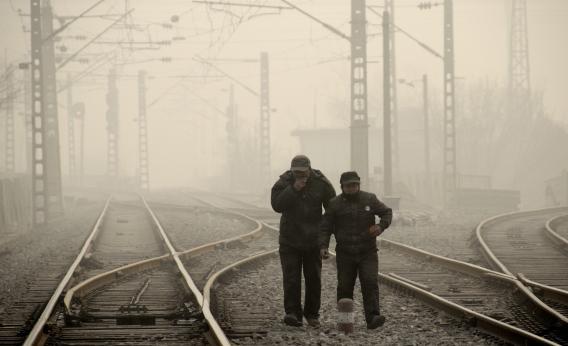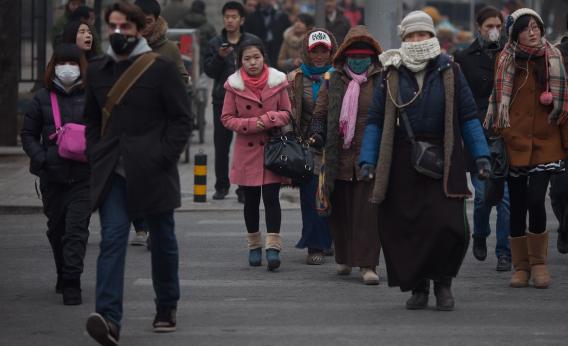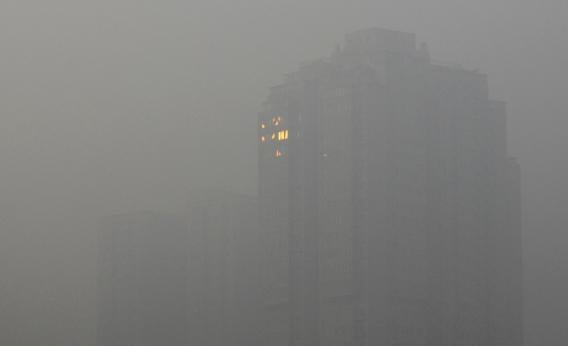Republican lawmakers and talking heads have taken to referring to federal environmental regulations on coal-fired power plants collectively as a “war on coal.” The term, which Mitt Romney repeatedly lobbed at Barack Obama during the last presidential campaign, is sort of an energy-policy corollary to the “war on Christmas”—a hyperbolic catchphrase that evokes a bunch of militant big-government liberals using political correctness to bludgeon red-blooded Americans into surrendering the traditions they hold dear. The doublespeak is designed to make you forget what the war on coal, to the extent that it exists, is actually a war on: air pollution.
For a bleak reminder of its importance, we need only glance sidelong at Beijing, where the U.S. Embassy on Saturday evening showed an air-quality reading of 755, reports the Wall Street Journal. A rating of 300 is considered “extremely rare” in the United States and happens mainly during forest fires, according to the EPA. The scale typically only goes up to 500, with ratings above that listed as “beyond index.” In response to the Beijing reading—high even for China—flights were canceled, and highways closed. Schools called off sports activities, and hospitals recorded spikes in patients reporting breathing problems, according to the Guardian.
The off-the-charts concentrations are presumed to be the result of windless days that have allowed pollutants to build up in the sky over major cities. But the root causes are China’s heavy reliance on coal and cars to power its unprecedented economic growth.
The New Yorker’s Evan Osnos, who lives in Beijing, has a vivid if disconcerting dispatch from the city, which helps to underscore the extent to which pollution shapes people’s lives there. An excerpt:
In Beijing, we talk about air purifiers the way that teen-age boys talk about cars. More than once, I’ve gone into a friend’s apartment and put an admiring hand on a top-of-the-line, IQAir HealthPro, and said, “Niiiice.” (The cost? About nine hundred bucks per room.) At our house we have a lesser brand, and the following will sound like a joke, but I’m sorry to say it’s not: the filters for these machines are so expensive that we get ours under the table, through a connection that my wife has involving a stern Russian woman from Vladivostok. How she gets them, I don’t ask and she doesn’t tell. …
We live in a one-story house with windows that face the yard, in part because we discovered, years ago, that sweeping views from a high floor are just a daily reminder of all that you can’t see. We gave up running outside years ago and bought a treadmill, after a doctor-friend weighed the issue and concluded that running inside was better than going without exercise.
And while Beijing is getting the attention today, it doesn’t even make the list of the 10 dirtiest Chinese cities, according to the WSJ.
Thanks in part to environmental regulations like the Clean Air Act, the United States has never seen anything like what China is enduring right now. And thanks to market forces such as the plummeting prices of natural gas and alternative energy sources, our reliance on coal is likely to wane over time even without strong interventions. Unfortunately, pollution that happens in China doesn’t stay in China. If the Obama administration wants to preserve our quality of life for future generations, the solution isn’t to back off from the war on coal. It’s to urge China’s government to join the fight.

Photo by Ed Jones/AFP/Getty Images

Photo by Wang Zhao/AFP/Getty Images

Photo by Ed Jones/AFP/Getty Images
